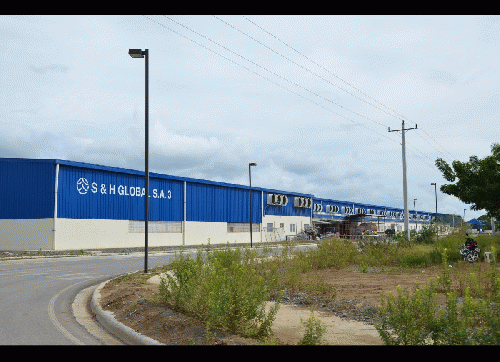Jean-Max Bellerive, who was co-chair of the Interim Haiti Recovery Commission click here along with former President and Haiti Special Envoy Bill Clinton, happened also to be on the board of VCS. Both Rodham and Bellerive resigned from the VCS advisory board in March 2016 members-resignation/ a week after the New York Times scrutinized Rodham's involvement in the mining company, click here and one year after the Times click here revealed that Clinton used a private email account on a private server while Secretary of State.
But the mine was just the tip of the iceberg.
South Korea Pays to Play in Haiti
In December 2010, nearly 12 months after the Haiti earthquake, the United States and South Korea finally inked a trade deal that had languished since 2007. Ratification of the agreement stalled when the Democratic Congress under George W. Bush balked over details involving bilateral trade in automobiles and beef exports from the U.S. President Barack Obama and President Lee Myung-bak finally reached an agreement at the 2010 G-20 Seoul Summit, and in March 2012 the agreement was implemented. South Korea had its eyes on Haiti, "a Least Developed Country (LDC) enjoying preferential trade access to 17 country markets, as well as access to the European Union. Haiti also offered duty-free access to the U.S. market for the clothing industry through the HOPE II and HELP legislation."
Hillary and Bill Clinton needed South Korea and its Sae-A garment manufacturing giant to be the anchor tenant in the ambitious industrial park set to be built on farmland in the northern part of the country-- land untouched by the earthquake. The industrial park would give South Korea access to cheap labor and the power plant could power local communities as well as the future VCS gold mine.
U.S. trade preferences would make Haiti an attractive place to invest. But investments inevitably benefit the investor and certain garment industry players were long-time friends of the Clintons.
The Power(s) Behind the Caracol Industrial Plant
One thing was certain. The Morne Bossa mining project would need electricity to operate.
The Clintons' Interim Haiti Recovery Commission (IHRC) promised $1.6 billion in new projects to benefit the Haitian people and VCS Mining and South Korea were first in line to reap the bonanza of the promised windfall. Deemed a "huge failure," click here IHRC still "controlled the bankroll and could award the lucrative contracts."
Much has been written about Haiti's Caracol, and failed promises of jobs there. When a recent Washington Post article highlighted Hillary Clinton's failure to deliver 200,000 jobs to upstate New York during her time as Senator, yet another Clinton cycle of promises offered yet unfulfilled was a prescient warning of what would unfold in Haiti in 2010.
In her current run for President of the United States Clinton offers her job creation plans for upstate New York as a blueprint for how she would jump-start the U.S. economy. But her job creations promises failed miserably in New York State, just as the Clinton Foundation's assurances would never come to fruition at the Caracol Industrial Plant.
The total number of people working at Caracol at the end of September 2015 was 8,648. 40-60,000 jobs were promised at the PIC.
The Caracol Industrial Park ("CIP") was built on a square mile, 600 acre (246 hectare) tract near the village of Caracol. The site was a former slave plantation and housed Marines during the 1915 Woodrow Wilson occupation of Haiti. The land has a horrible history and was known as the Chabert Post where 330 U.S. Marines ran a prison labor camp. The iconic rebel leader Charlemagne Peralte was murdered by a U.S. Marine and initially buried on the property in an unmarked grave. His half-naked body was paraded through local communities, strapped to a door.
The addition of Sae-A Global guaranteed an anchor tenant for Caracol. The $300 million project includes a 10-megawatt power plant (1 megawatt in the US will power 1000 homes), roads, a water- treatment plant, promised worker housing, and development of a port in nearby Fort-Liberte. Caracol and was built with assistance from the Inter-American Development Bank, contributions by the United States government, and The Clinton Foundation.
Over four hundred thousand Haitians were unemployed and homeless in 2010. Hope was fading and promised monetary help had either been squandered or stolen. At a Senate hearing on in May 2011, Republicans, led by Rep. Jason Chaffetz (R-Utah), described U.S. relief efforts in Haiti as "pathetic" and said USAID had failed to track its spending and appropriately monitor outcomes. click here
Next Page 1 | 2 | 3 | 4 | 5 | 6 | 7 | 8
(Note: You can view every article as one long page if you sign up as an Advocate Member, or higher).






